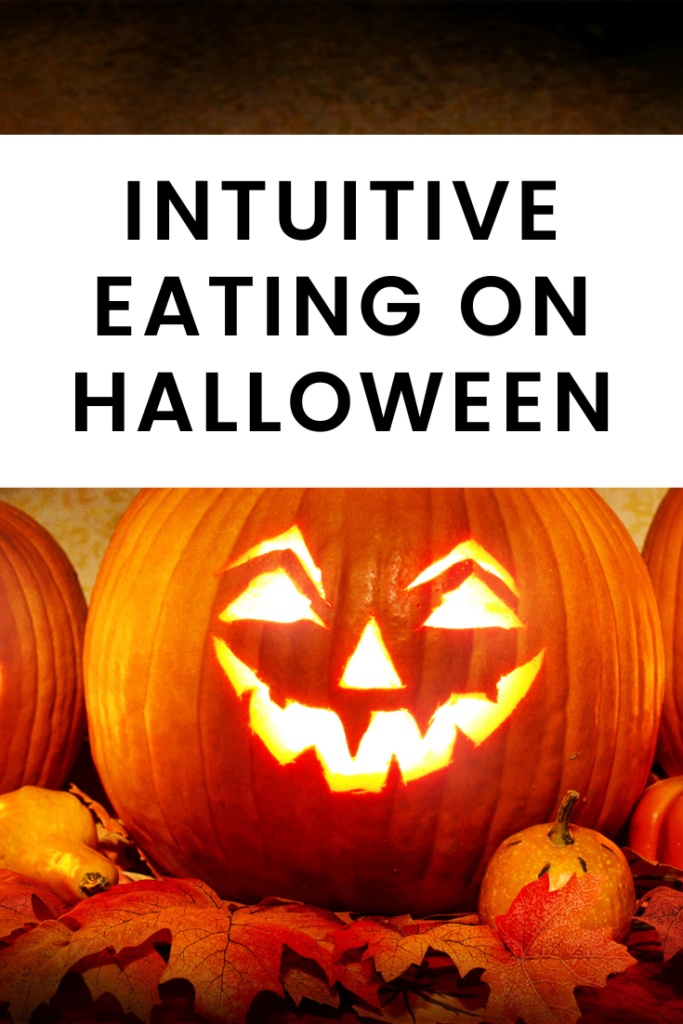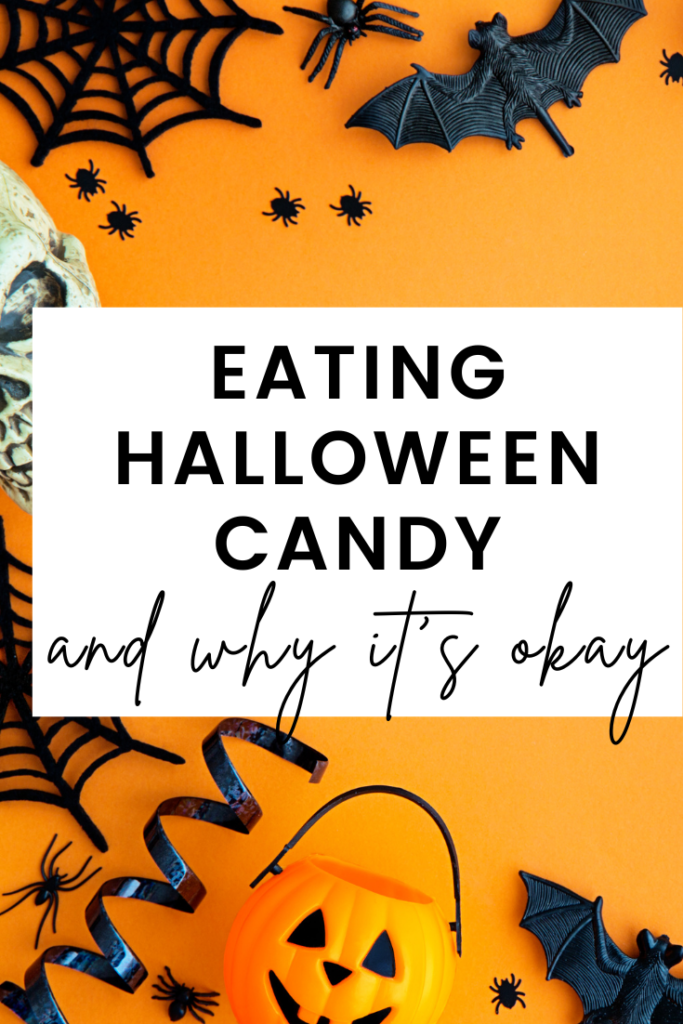For me, Halloween means cute decor, loads of chocolate, and fun costumes. I was never in love with trick-or-treating, but rather, crafting cute mini candy bags to hand out to young trick-or-treaters. As someone with an avid sweet tooth, I love Halloween. But for those struggling in the depths of diet culture, Halloween ignites a very stressful few months.
As a dietitian, I’ve devoted my career to educating dancers about how to build nourishing fuel plans and supportive relationships with food and body image. So, how do we fit the influx of sweets into this? My answer might surprise you.
In this article, we’ll discuss why Halloween sparks stress for many dancers and why dodging candy won’t help to support a “healthy” Halloween. You’ll uncover how Halloween can be an opportunity to try intuitive eating and build a supportive relationship with candy (yup… a relationship with candy IS a thing). And last, I’ll share 3 critical strategies for you to trade your fear with confidence during the spooky holidays.
Spoiler: Sugar isn’t addictive
The most common worry about Halloween is overdoing it on candy. I’ve previously written a complete guide on how dancers can include sugar in their meal plans without stress. But here’s the key point: there is no convincing evidence that sugar is addicting. If you’re feeling like once you start, you’ll never stop, then consider the role of restriction as a driver of “over”-eating. In fact, there are even studies to support this, along with brain scans that reveal when compared to non-dieters, dieters experience a heightened reward response to restricted foods (mainly sweets). Simply put: food restriction (not sugar) drives overeating. To learn more about food addiction, check out this article.
I truly believe that we can reconnect to our intuitive ability to eat Halloween candy in a way that feels good physically. In other words, eating candy to a point of physical comfort, NOT discomfort. This doesn’t involve following strict portion control. Rather, utilizing self-discovery to determine how much works for you (mindful eating techniques and the hunger/fullness scale are two tools that can help in this process.)
Spoiler: Halloween candy is here to stay
One of the biggest mistakes I see around Halloween is the attempt to completely avoid candy. But the reality is that even if you plan to do away with candy at home, you’re likely to meet with bowls of candy elsewhere. It could be at the studio, while you’re waiting for a doctor’s appointment, or at school. The bottom line: you can’t hide from candy nor should you! Each of these instances will create an all-or-nothing mindset toward the sweet stuff, leaving you to experience an eventual overwhelm or period that feels “out-of-control.”
I don’t recommend keeping a candy-free household. Quieting the diet mentality and those subsequent thoughts of, “I shouldn’t be eating this!” will make room for a mindset of allowance. From here, you’ll be better able to self-regulate the amount of candy you’re eating each day. Here are a few articles to help in this process:
- What is the dieting mentality?
- Unconditional permission around food.
- The Healthy Dancer Food Flexibility Algorithm
Two Key Strategies for a Healthy Halloween
#1: Prioritize Nourishment
Intuitive eating on Halloween doesn’t mean we’re tossing self-care in the garbage. Sure, it might seem like this technology gives us permission to eat ALL the candy anytime we want, but it also helps us discover what supports us physically and mentally. How would you feel physically if you opened the floodgates and ate ALL the candy? This influx of sugar could leave you drowsy and sluggish.
Practical hunger is always important for busy dancers- this involves a flexible eating routine that includes about 3 meals and a minimum of 2 snacks throughout the day. Aiming to save calories or compensate for candy will drive your likelihood of “over”-doing it. Especially on Halloween and the surrounding days and weeks when candy is in abundance, keep nourishing your body with regular meals and snacks. This isn’t to “crowd out” opportunities to eat candy, but rather, to enable you to enjoy candy without it being for the purpose of making up for a calorie deficit. At this moment, you can evaluate internal cues of satisfaction and fullness.
#2: Remember Self-Compassion
Wellness culture pathologizes overeating and normalizes food restriction and restraint. Rather than holding yourself to willpower, be confident that you can enjoy these options tomorrow, the next day, the day after that, and so on. And even so, realize that “over”-eating is a normal human experience; especially around the holidays when we’re enjoying celebratory experiences that only come once a year. Since candy is technically available all year round, if you’re struggling to self-regulate, then it could be a sign that candy needs to make its way into your meal plans more often.
Now that you’re ready to enjoy your candy, remember that there’s no “good” nor “bad” food. This includes candy Restricting your most pleasurable options will result in a vicious cycle of feeling super in control around candy only to eventually feel super out-of-control around candy. Embrace the fact that candy is fun and as with all Holidays, Halloween can bring joy and celebration into your life. Harboring a restrictive mindset towards food will only lead to a sad holiday!





